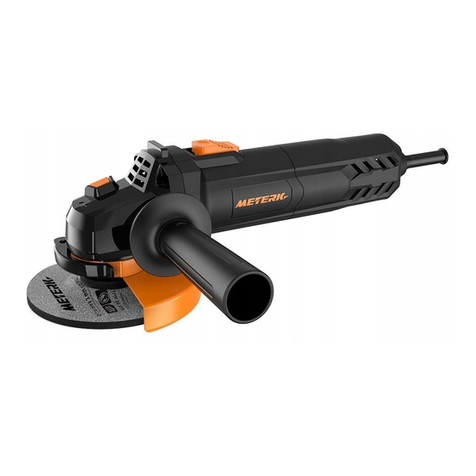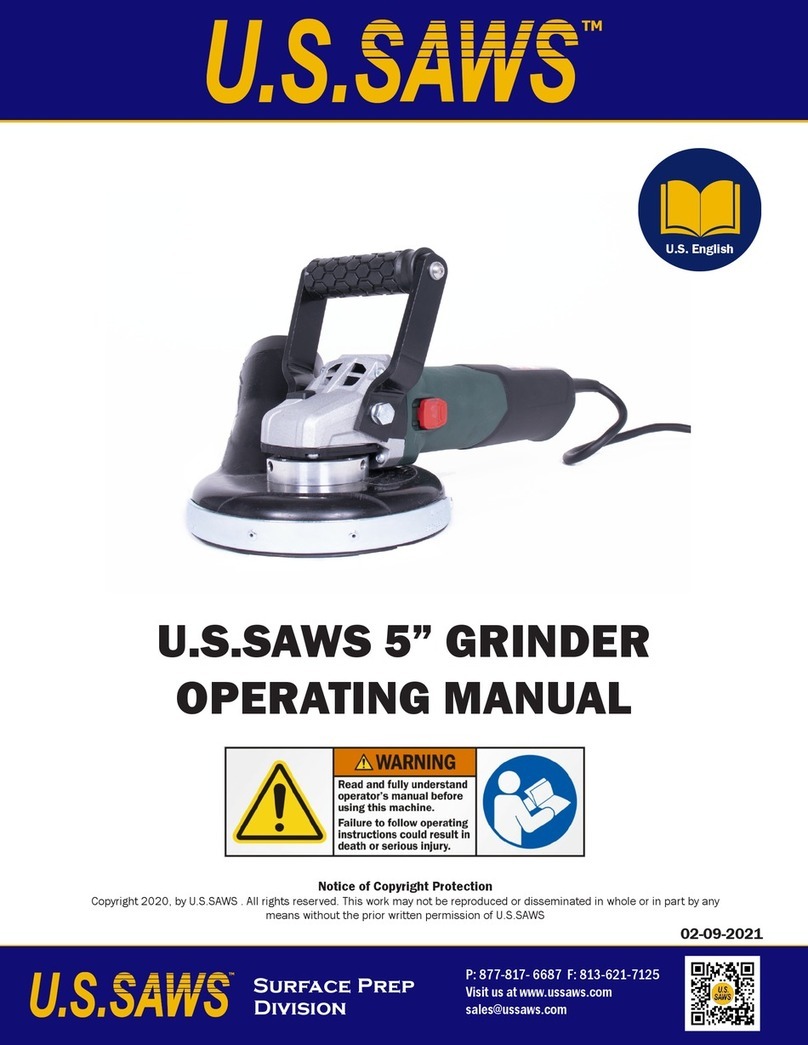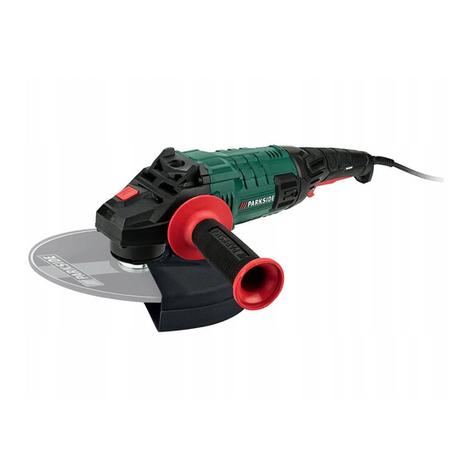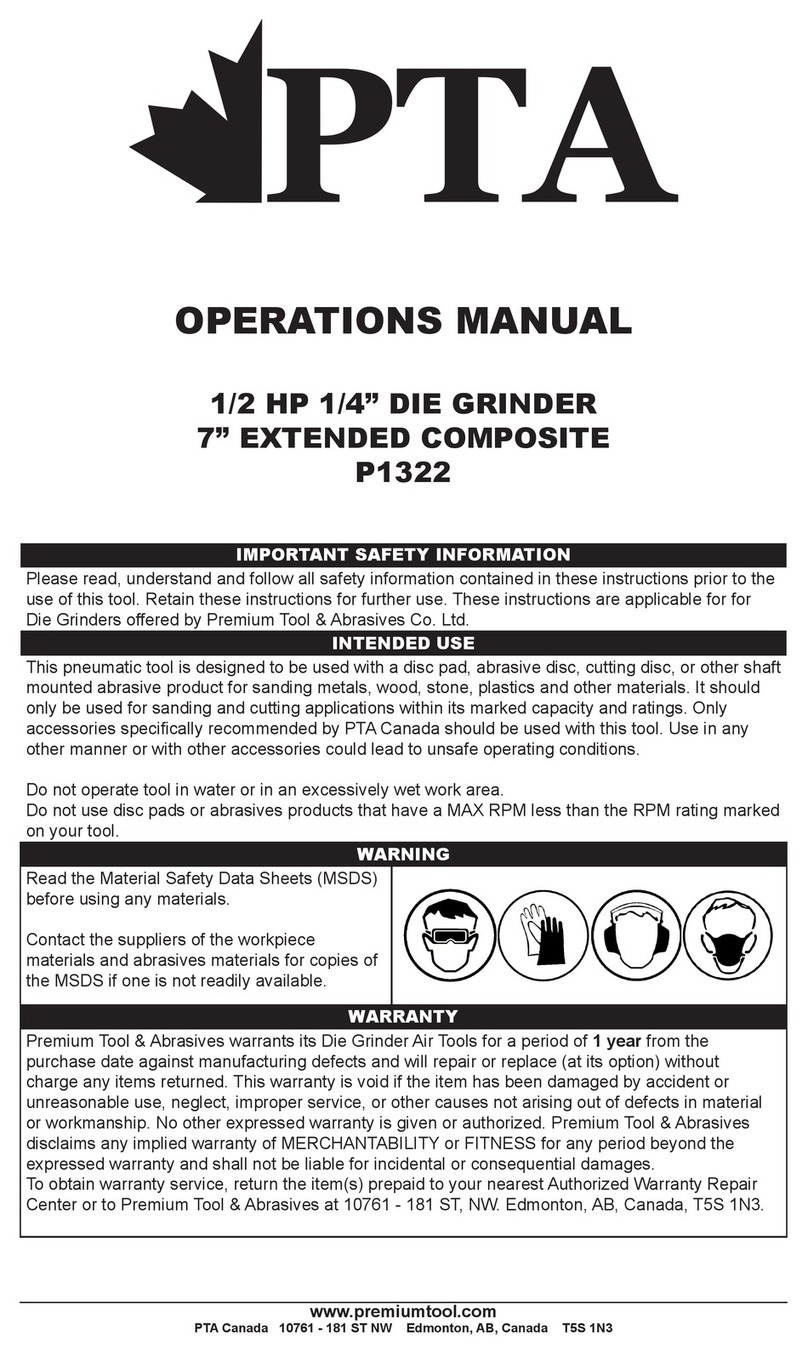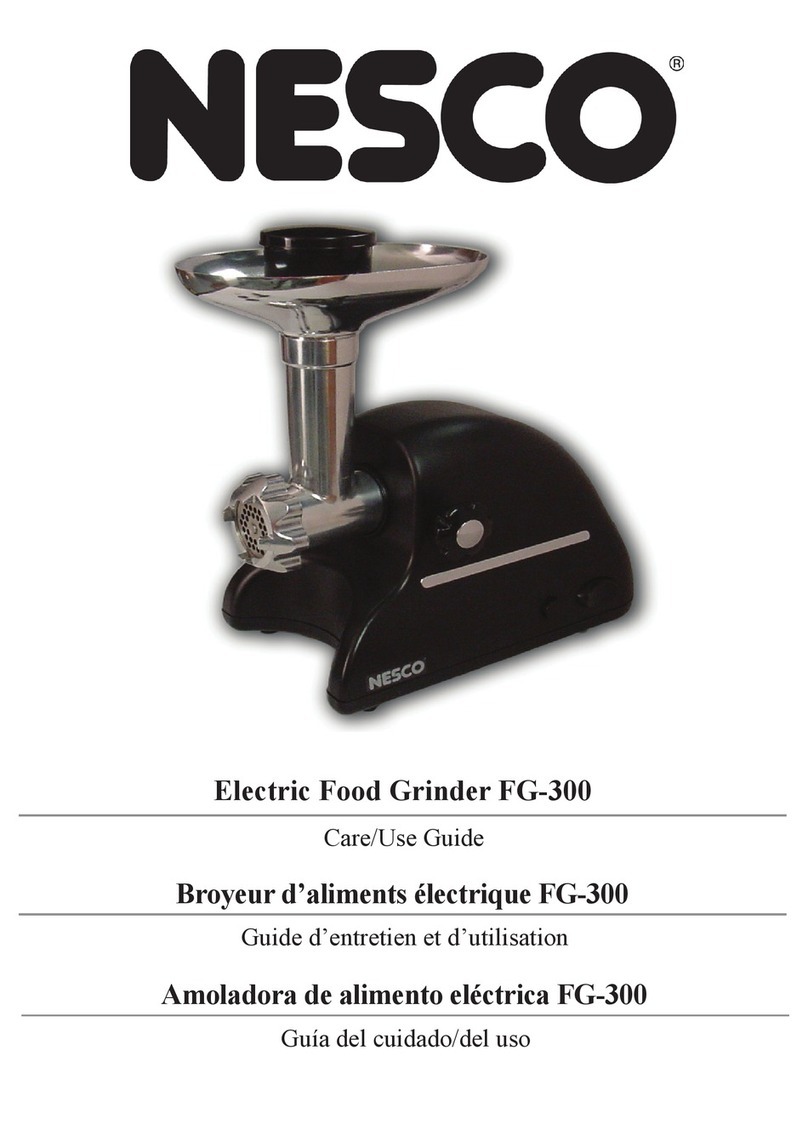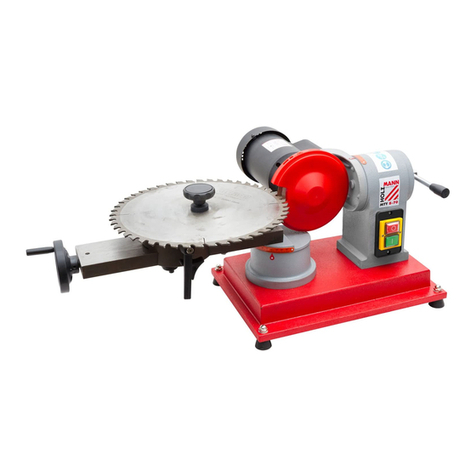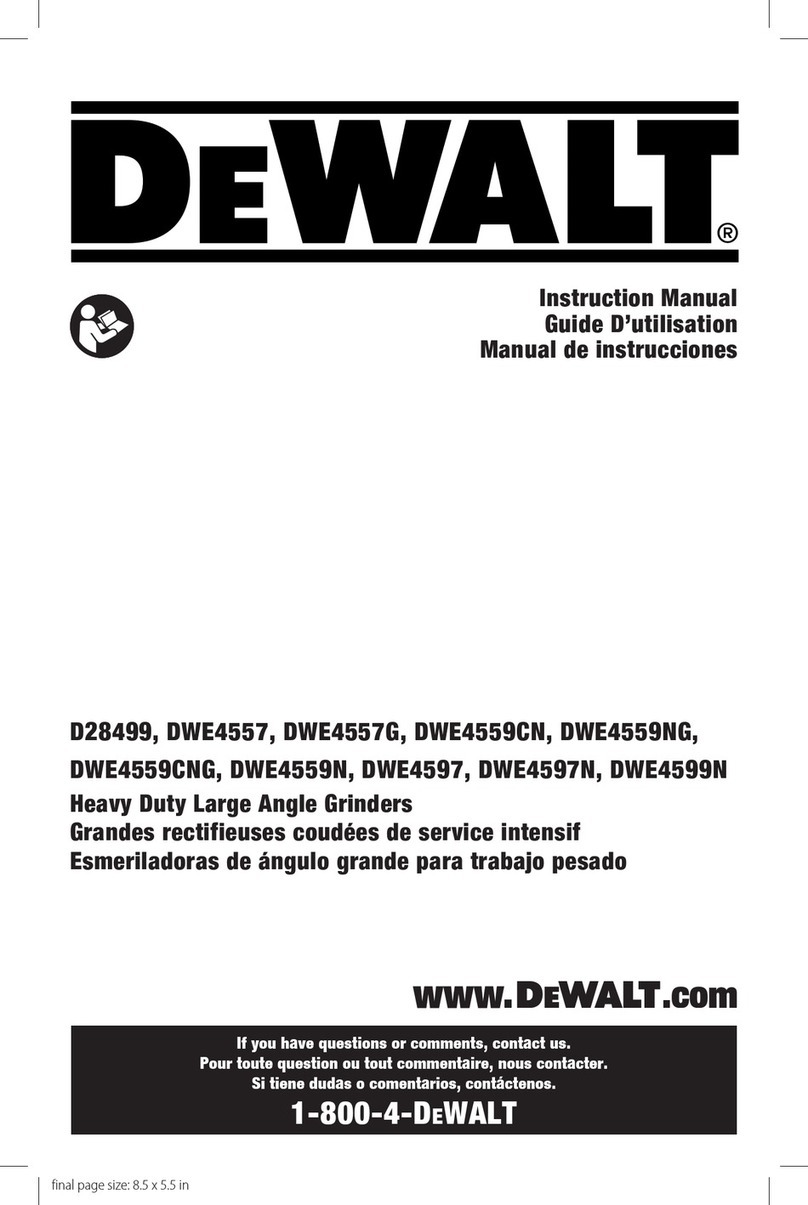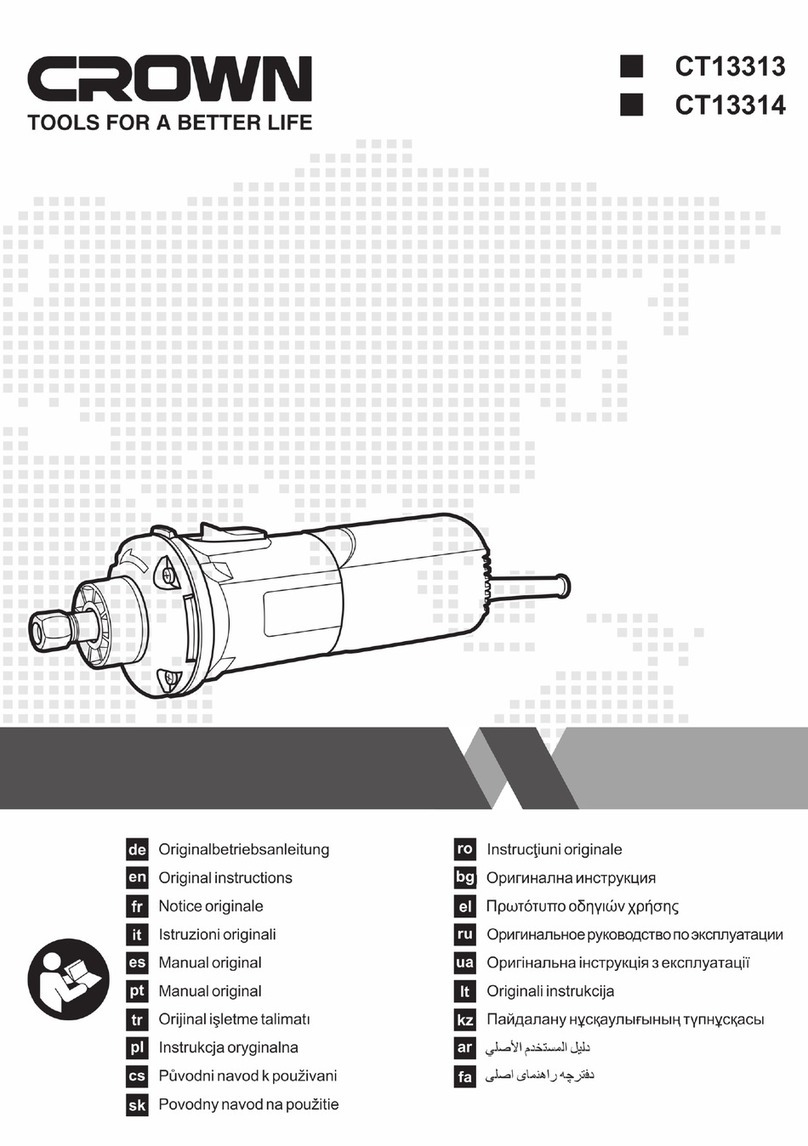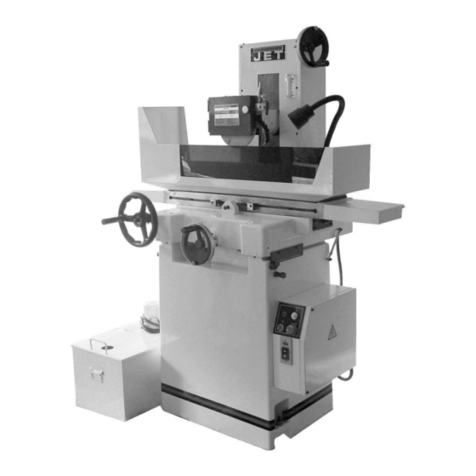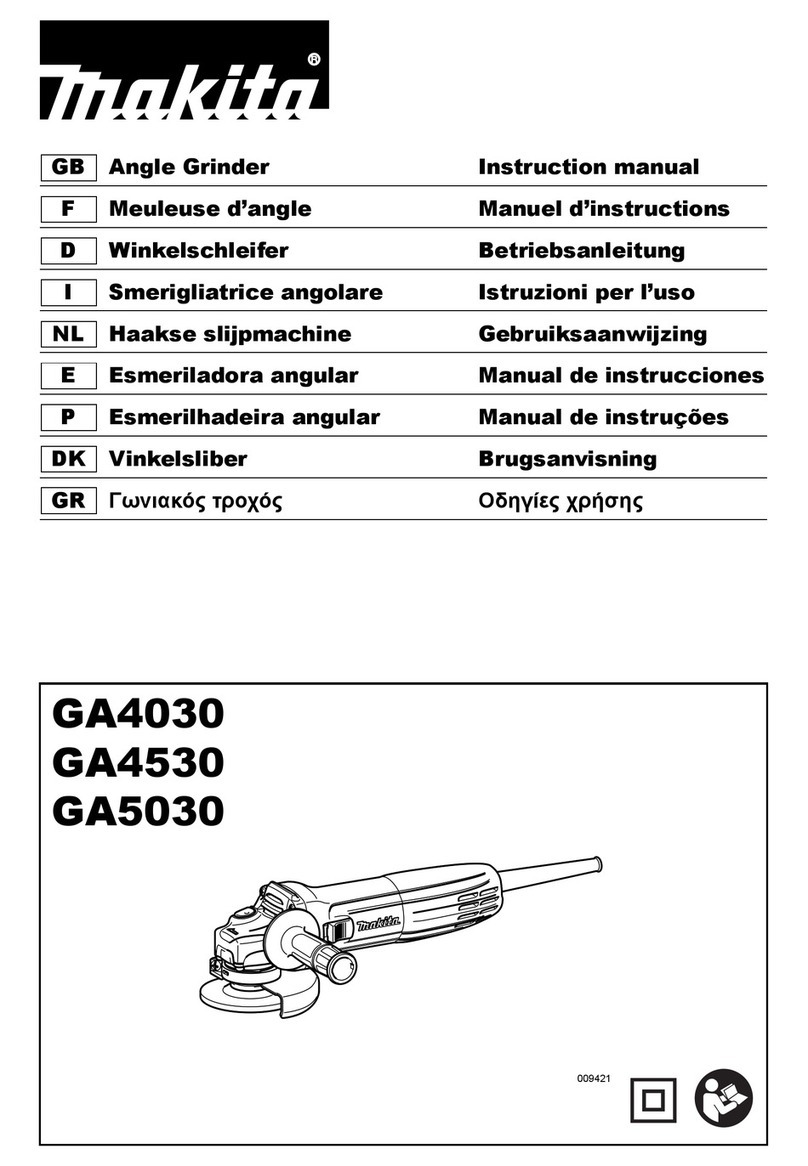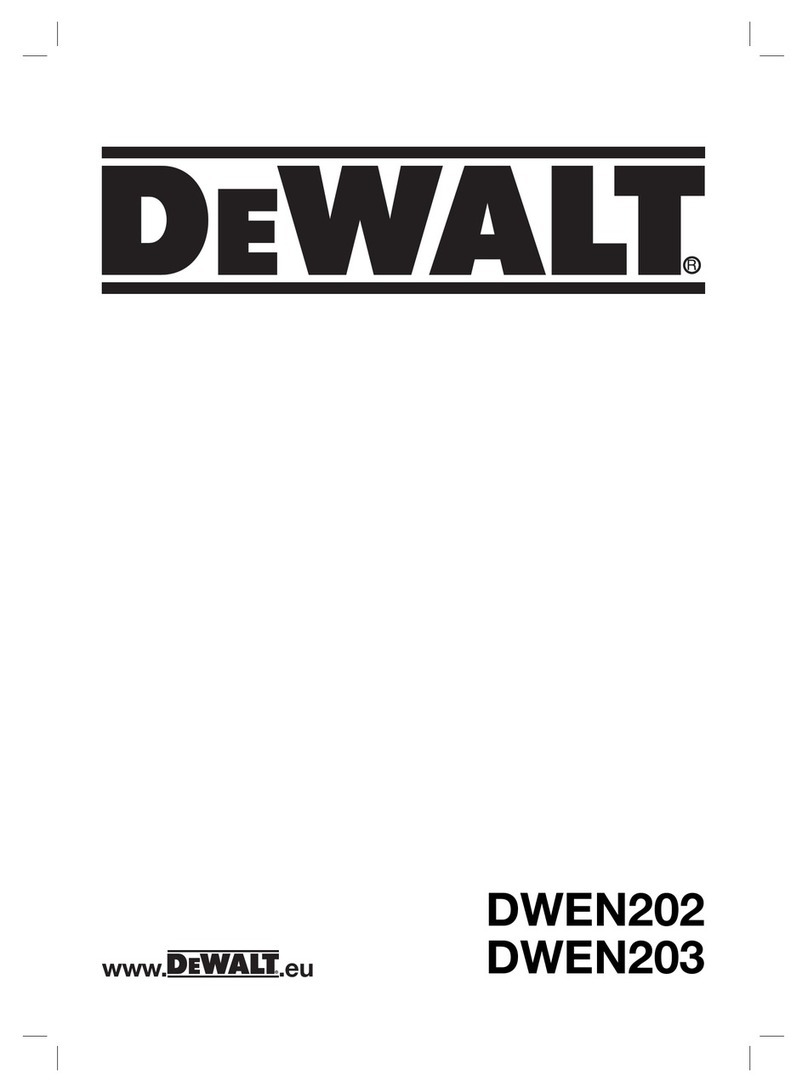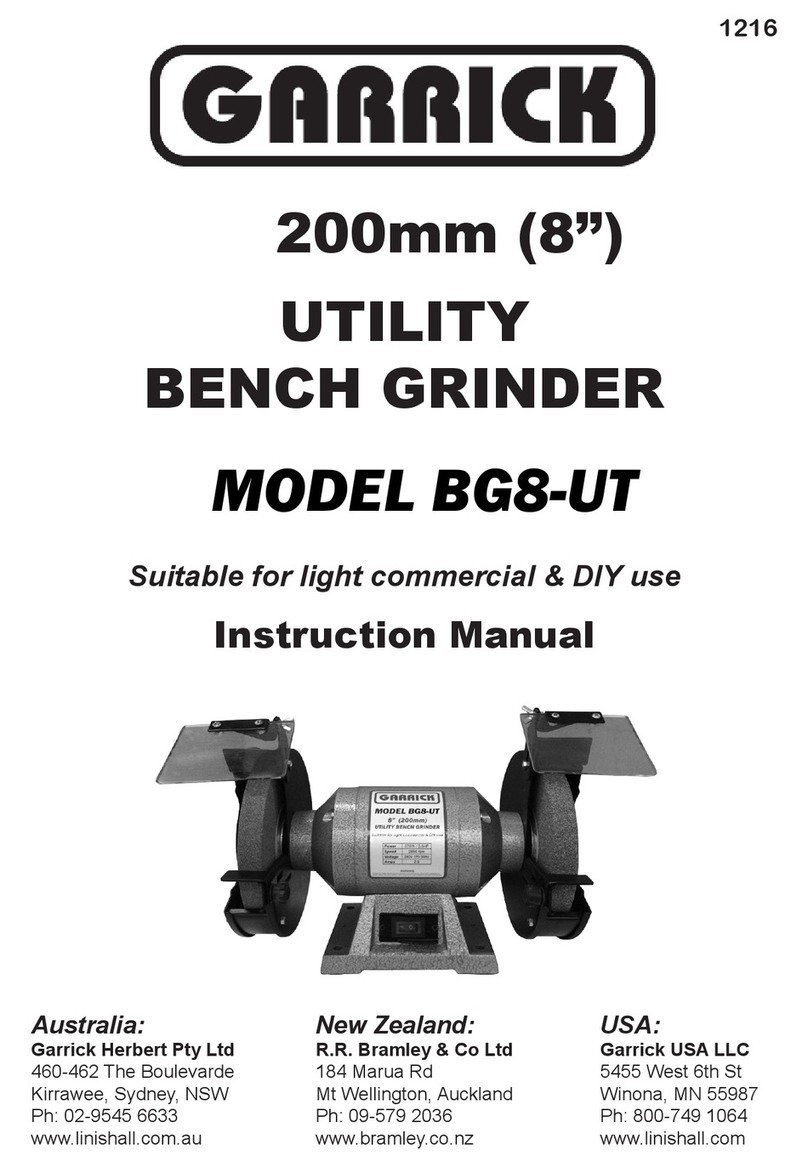
Supplementary Safety Rules for
Angle Grinders
1.
T
his electric tool is used for realizing the sanding function.
Read all safety warnings, instructions, illustrations and
regulations provided with this electric tool. Failure to
understand all the below instructions will result in electric
shock, fire and/or serious injury.
2. It is not recommended to use this electric tool for
operations such as sanding, brushing, polishing or cutting.
It may be dangerous and cause personal injury if you do
not operate the electric tool by following the specified
functions.
3. Accessory selection: please use the accessories
recommended and specially designed by the
manufacturer, otherwise it may cause unsafe operation.
4. The rated speed of accessory must be at least equal to
the maximum speed marked on the electric tool. The
accessory will crack and fly out if its operating speed is
greater than the rated speed.
5.
The outer diameter and thickness of accessory must be
within the rated capacity of electric tool: incorrect accessory
size cannot be adequately protected and controlled.
6. The shaft hole size of the grinding wheel or any other
accessories must be suitable for the spindle of electric
tool to be installed: the balance will be lost during
operation if the accessories whose hole diameter is
unmatched are installed on this electric tool, resulting that
it is out of control and dangerous by excessive vibration.
7.
Do not use the damaged accessories. Check the
accessories before using the tool each time, for example
check if the grinding wheel has fragments and cracks.
Check if the outer flange nut has cracks, tears or
excessive wear. Check whether the electric tool or
accessory is damaged when they are dropped. When
inspecting the attached accessories, keep yourself and
bystanders away from the surface of the rotating
accessories, and operate the electric tool at the maximum
no-load speed indicated on it for 1 min; the accessories
will be cracked during the test if they are damaged.
8.
Wear the protective equipment. Wear the face shield, safety
goggles or safety glasses according to the operation. Please
wear the dust mask, hearing protectors, gloves and work
apron that can block small abrasives or workpiece fragments
during operation. The eye protection cover must be able to
block the flying debris generated in various operations, and
the dust mask or cover can filter the particles generated in
the operation. The hearing loss can be caused if working in
a high-intensity noise for a long time.
9.
Keep bystanders a safe distance from the work area.
Anyone entering the work area must wear protective
equipment. The work pieces or the pieces of broken
accessories may fly out and cause injury to bystanders
who are close to the operating area. The exposed metal
parts of electric tool will be charged when the cutting
accessory touches the live wire, and the operator will get
an electric shock.
10. Keep the cord away from the rotating accessories. The
cord may be cut or entangled if it is not properly
controlled, resulting that your hand or arm may be caught
in the rotating accessories.
11. Do not start the electric tool when carrying it. Otherwise, it
may entangle your clothes and cause yourself injury if you
accidentally touch the rotating accessories.
12.
Always clean up the vents of electric tool. The motor fan will
suck dust into the casing during operation, and excessive
metal powder deposits can cause electrical hazards.
13. Do not use accessories that require coolant. It may cause
electric corrosion or electric shock when using water or
other coolants.
14. Do not put down the electric tool until the accessory
completely stops moving. The rotating accessory may
grab the surface and pull the electric tool, making you
lose control of the tool.
15.
Do not operate electric tools near flammable materials.
Sparks may ignite these materials.
16.
You can only operate the electric tool by holding its
insulated grip surface if work in a place where the
cutting accessory may cut the hidden wire or its own
wire. The exposed metal parts of electric tool will be
charged when the cutting accessory touches a live
wire, and the operator will get an electric shock.
Rebound is a sudden reaction force caused by the grinder
accessories or other accessories, these grinder accessories
are out of control because the rapid block happens on the
rotating grinder accessories which get stuck or entangled. The
stuck or entanglement will cause the rotating electric tool to
produce a movement opposite to the rotation direction of
accessory at the stuck point. For example, the grinding wheel
edge that extends into the stuck point may enter the material
surface and cause the grinding wheel to crawl out or rebound
if the grinding wheel is entangled or stuck by the workpiece.
The grinding wheel may fly to or fly away from the operator.
The rebound is caused by the misuse or improper operation
of electric tool, which may be avoided by taking the
appropriate precautions given below.
1. Keep a tight grip on the electric tool, so that your body or
arms are in the correct state to resist rebound force. Always
use the auxiliary handle to maximize the control of rebound
force and torque when starting if there is an auxiliary
handle. The operator can control the reaction torque or
rebound force if the appropriate precautions are taken.
2. Never bring your hand close to the rebounding accessory,
which may rebound and touch your hand.
3.
Do not stand where the electric tool may move when
rebound occurs. The rebound will drive the tool to move
against the movement direction of the grinding wheel at the
entanglement point.
4. Pay attention when working at sharp corner, sharp edge,
etc. to prevent the accessory from bounce and
entanglement. The sharp corner and sharp edge are likely
to entangle the rotating accessories and cause rebound for
loss of control.
5. Do not install saw chain, woodcarving blade or toothed
saw blade. These saw blades will produce frequent
rebound and loss of control.
1.
Only use the recommended grinding wheel model and the
guard specially designed for choosing the grinding wheel.
The grinding wheels that are not designed for electric drive
cannot be adequately protected and are not safe.
2.
The guard must be firmly attached on the electric tool and
placed in the safest way. Only the smallest part of the
grinding wheel is exposed to the operator. The guard is
helpful to protect the operator from the risk of the cracked
grinding wheel fragments and accidental contact with the
grinding wheel.
3.
The grinding wheel is only used for the recommended
operation. For example: do not use the side of the cutting
wheel for grinding operation. The force applied to the side
of the grinding wheel may break the grinding wheel.
4. Always choose the undamaged grinding wheel flange
which has proper specification and shape for the selected
wheel. The proper grinding wheel flange can be used to
support the grinding wheel, reducing the breakage
possibility of grinding wheel. The cutting wheel flange can
be different from the grinding wheel flange.
I. General Safety Warnings for Grinders:
II. Grinder Warning - Rebound
III. Grinder Warning - Grinding and Sanding
Operation
5.
Do not use the worn-out grinding wheels left over from
large-size electric tools. The grinding wheels used on
large-size electric tools are not suitable for the high-speed
working conditions of smaller-size tools and may crack.
